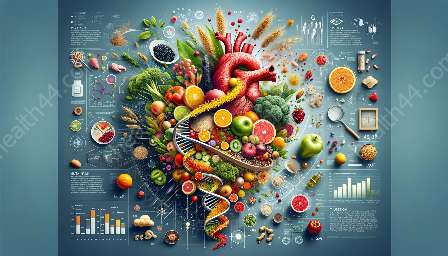Technology has revolutionized various aspects of our lives, and its influence on dietary assessment and monitoring is no exception. With the widespread use of smartphones, wearable devices, and innovative software, individuals now have the opportunity to more accurately track their dietary intake, monitor nutritional patterns, and make informed decisions about their health.
The Impact on Nutritional Assessment
Nutritional assessment, the process of evaluating the nutritional status of individuals or populations, has traditionally been carried out through methods such as dietary recalls, food diaries, and questionnaires. These methods, while valuable, are often subjective and reliant on accurate reporting by individuals.
By incorporating technology, nutritional assessment can benefit from more objective and real-time data collection. This enables increased accuracy and comprehensiveness in evaluating dietary intake, nutrient consumption, and overall nutritional status.
Benefits of Utilizing Technology for Dietary Assessment
There are several key benefits to incorporating technology into dietary assessment and monitoring:
- Accuracy: Technology allows for precise measurement and recording of dietary intake, reducing the margin for error inherent in manual reporting.
- Real-time Monitoring: With the use of apps and wearable devices, individuals can monitor their dietary habits in real time, gaining immediate insights into their nutritional patterns.
- Behavioral Analysis: Advanced software can analyze dietary behaviors and provide personalized recommendations for improved nutrition based on individual preferences and goals.
- Enhanced Engagement: Utilizing technology can make dietary assessment and monitoring a more engaging and interactive experience, encouraging individuals to be more mindful of their nutritional choices.
Challenges and Considerations
While the integration of technology into dietary assessment and monitoring offers numerous advantages, there are also challenges and considerations to be mindful of:
- Data Privacy: The collection and storage of personal dietary information raise concerns about data privacy and security. It's essential for technology developers to prioritize robust data protection measures.
- Accessibility: Not all individuals have equal access to technology, potentially creating disparities in the ability to utilize these tools for dietary assessment and monitoring.
- Reliability of Tools: It's important to ensure that the technology being used for dietary assessment and monitoring is reliable and validated for accurate data collection and analysis.
Potential Applications of Technology in Dietary Assessment
The possibilities for utilizing technology in dietary assessment and monitoring are vast:
- Mobile Apps: There is a wide range of mobile applications available that enable users to track their dietary intake, receive nutritional insights, and set personalized goals for better health.
- Wearable Devices: Wearable technology, such as smartwatches and fitness trackers, can seamlessly capture data on physical activity, calorie expenditure, and even provide reminders for meal planning and hydration.
- Artificial Intelligence (AI) and Machine Learning: Advanced algorithms can be used to analyze dietary patterns, recognize food items from images, and offer tailored nutritional recommendations.
- Tele-dietetics: Technology facilitates remote access to dietitians and nutritionists, allowing for virtual consultations and personalized guidance for dietary improvement.
Conclusion
Technology has the potential to revolutionize the field of dietary assessment and monitoring, offering individuals the tools to make more informed and personalized decisions about their nutrition. While there are challenges to address, the benefits of integrating technology into nutritional assessment are substantial. By leveraging innovative solutions, we can strive towards a future where nutrition is seamlessly monitored and optimized, enhancing overall health and well-being.


